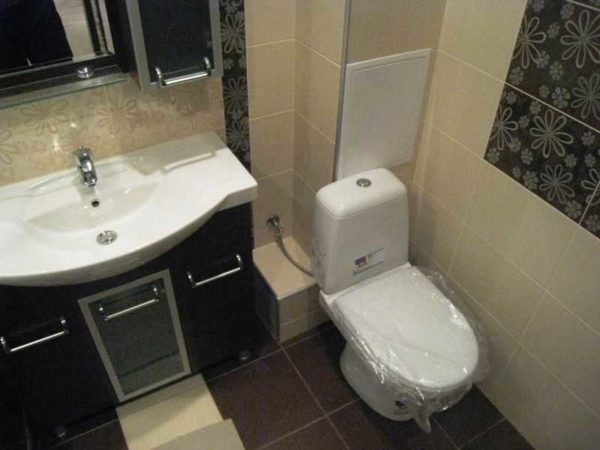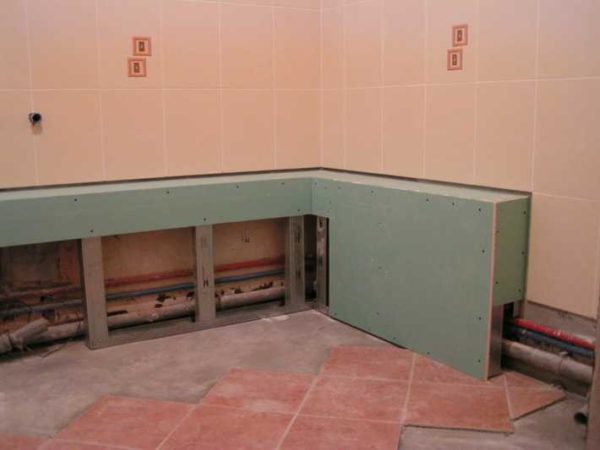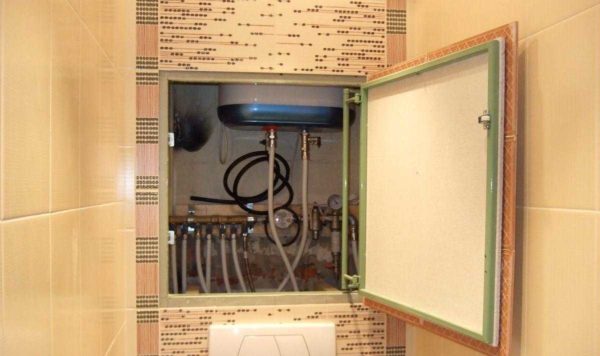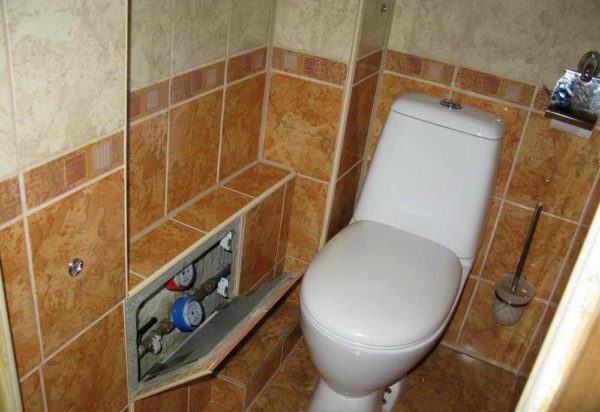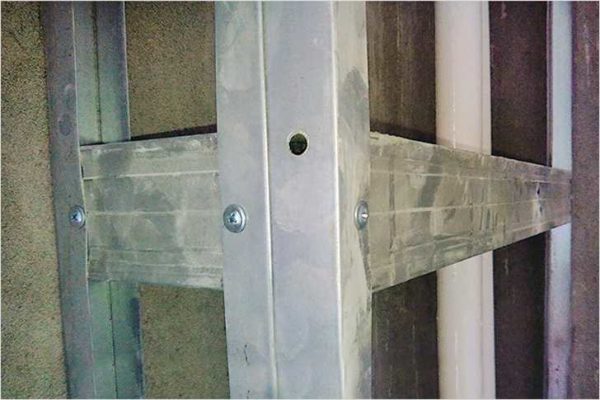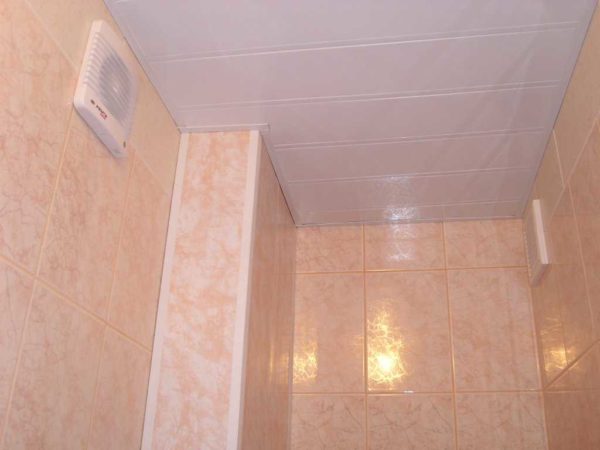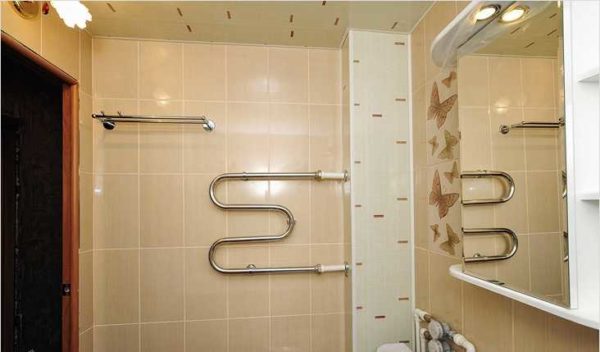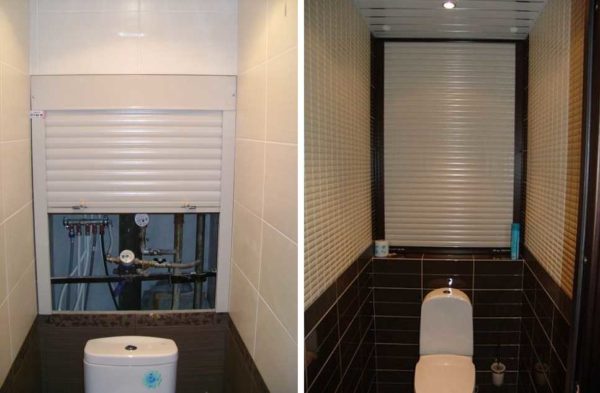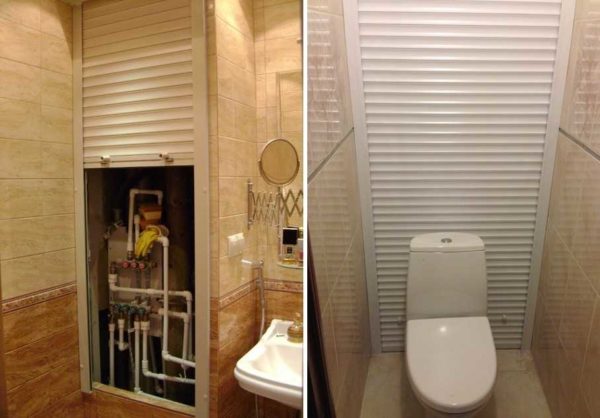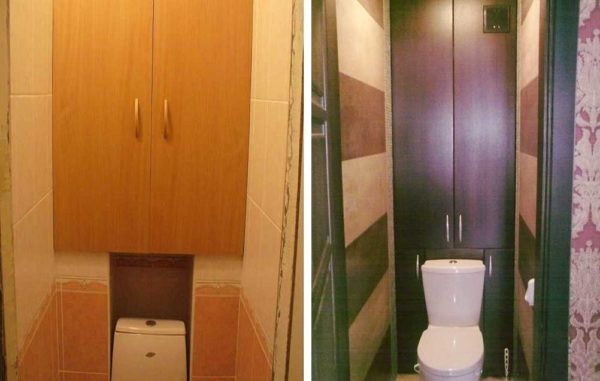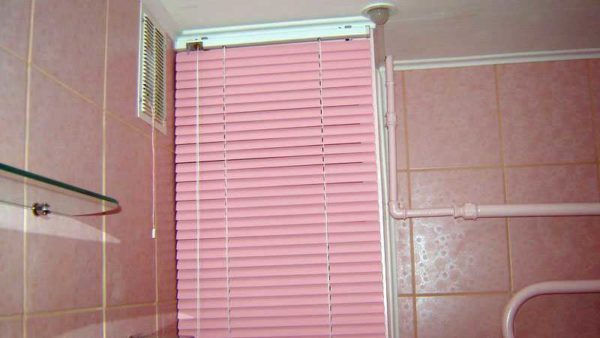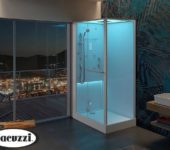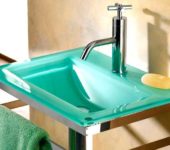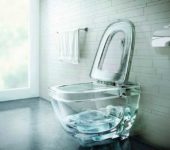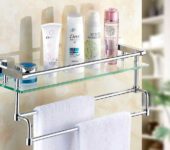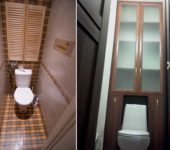How to hide (close) pipes in the toilet
Our comfort is provided by engineering systems, and their component is pipelines, so pipes in our home are inevitable. But their appearance, even among the new ones, only changed, is far from the most attractive. Therefore, there is a natural desire to hide them. Today we will talk about how to hide pipes in the toilet - it is in this small room that there are usually most of them.
You can hide pipes in a toilet in different ways, but most of the methods involve creating walls from different materials. If you have chosen this method, it is better to replace the old pipes with new ones in advance - both water supply and sewerage. It is definitely not worth hiding old communications behind the wall, it is better then to choose a lightweight option that will provide access to the pipes at any time.
The content of the article
How to make a drywall box
You can close the pipes in the toilet by making a drywall box. This is perhaps the most popular solution. This is because the technology is very flexible; pipes of any configuration can be hidden. Another nice bonus - multiple finishing options: lay the tiles on glue, level the surface with putty, then paint or glue the wallpaper.
Features:
If you choose to close the pipes in the toilet, there are several points that must be considered. The first one - to all key nodes - counters, filters, etc. you must have access. It is desirable to have quick access to the stopcocks. There are several options:
- make one panel hinged or swivel (hinged);
- part of the panel can be removable, fastened with a pair of self-tapping screws and / or magnets;
- put a hatch (plastic or invisible hatch under the tiles.
You can, of course, make the structure non-separable, but if necessary, you will have to break everything, then restore, and problems happen even with new pipes.
The second is the tile, if you finish it, it is better to glue it on special glue, and not put it on a mixture of cement and sand. A thinner layer of glue is required; its weight is less. Under these conditions, it will be easier to remove / lift the cover.
Work order
First, you decide how your box will look like. It is advisable to plan everything so that it not only closes the pipes, but, if possible, also carries a functional load. For example, if the pipes run down along the wall to the right or left, which happens if a toilet is installed hygienic shower, the box can be made a little higher, and various necessary little things can be put on its upper part.
If you close the risers that run in one of the corners behind the toilet (the layout of standard Khrushchev toilets), it makes sense to close not only that corner, but to sew up the entire wall, making a cabinet out of it. Shelves can be open or closed (with or without doors), but in small apartments this is very convenient.
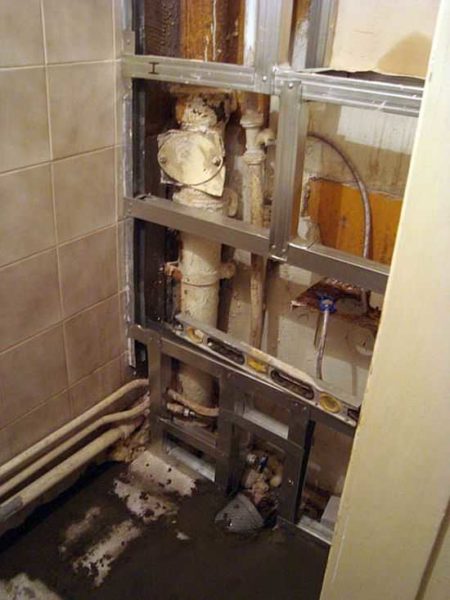
If the pipes are on the back wall, and the toilet is narrow and long, it makes sense to sew up the back wall completely
Having decided on how your box will look like, markings are applied to the walls, the floor. Then they take galvanized profiles for drywall. Downward and on the sides there is a bearing profile - PN (UW) - without bent sidewalls. Since the structures are small, a 50 * 40 mm profile is enough. A rack profile - PS (CW) - is used for the lintels - its width is also 50 mm, and the depth, if desired, can be small.
Jumpers are cut to size (with scissors for metal) and fastened with self-tapping screws. With a short distance - up to 50 cm - one is enough from each end, with a larger beam, put two. The step of installing the racks is about 60 cm, the jumpers - about the same step. At the point of attachment of the door (if such is provided), a reinforced double profile is placed.
The assembled frame is sheathed with plasterboard, cutting it to size. They are fastened with small self-tapping screws with a screw at the end (TEX 3.5 * 9.5 mm). Fasteners are installed around the perimeter and in the places where the jumpers / racks go, the step is 20 cm. When twisting, make sure that the cap sinks slightly into the drywall, but does not break through the cardboard.
You can read more about working with drywall here.
After sheathing, finishing work takes place, and they depend on the chosen finish. For painting and gluing wallpaper, the box is completely putty, for laying the tiles, only the screw heads are covered with putty.
What else can you make a pipe box in the toilet
Not everyone likes to work with drywall and profiles for them. In this case, the frame can be assembled from dry wooden blocks. If desired, they can (and in principle need to) be treated with antibacterial compounds - so as not to rot.
Instead of drywall, you can use OSB, moisture resistant plywood, or flat asbestos-cement sheets. All these materials can hardly be called 100% environmentally friendly, but many are more accustomed to working with them. All of them are moisture resistant, easy to process, so it's a good option. By the way, the tiles fit perfectly on asbestos, better than on all other materials, including gypsum board.
Make the back wall of the toilet from plastic
You can hide pipes in the toilet behind plastic panels. This method of closing the pipes in the toilet is the cheapest, but also the most short-lived. The plastic is easily squeezed through, so you have to be careful.
Now a little about aesthetics. If the wall decoration in the toilet is planned from the same plastic, then there are no problems at all - everything is in the same style. If the wall decoration is different, there are two ways out - to find plastic panels that are similar in color, or play on contrasts, adding a couple more details of the same color.
It is easy to sheathe the pipes in the toilet with plastic panels. First, the frame is assembled, but already wooden. It is fixed to the walls and floor with dowels. Since the structure is small, it will adhere perfectly to the nails, heavy loads are still not expected - the plastic can withstand only a very small weight.
Starting profiles for plastic panels are attached to the wooden frame, and pieces of panels of the required length are inserted into them. They have a tongue / groove connection and are installed without gaps. Plastic is attached to the frame with staples and a construction stapler. To provide free access to pipes for repair or maintenance, doors are made of plastic in the box / wall. In this case, you can install factory-made plastic hatches - they are lightweight and quite fit into the style of rooms decorated with plastic panels. Whoever doesn't like this option can make the doors on their own, making the frame also from wooden slats and sheathed them separately with plastic. There is another option - leave several strips loose and remove them if necessary.
When buying, choose wall plastic panels (there are also ceiling panels) - they have thicker walls, it is more difficult to push through. If you plan to use the upper surface of the box, it is better to lay a sheet of plywood (moisture-resistant) under the plastic.
Toilet roller shutters
The easiest way to close the pipes in the toilet is to put plumbing shutters (roller blinds, roller shutters). This option is ideal if you need to cover the entire back wall. Guides are installed on the sides, a reel with slats is attached on top, that's all, the installation is over, you can use it.
The disadvantage of this option is the price of roller shutters. She bites. But at any time you can lift the roller shutter covering the pipes and you can repair it. There is another way to reduce the price - the roller shutter should not be installed from floor to ceiling, but only the central part, where all the connections are located, is closed.
Even if it is not necessary to close the entire wall, but only part of it, you can build a wall of gypsum board or wall foam blocks and attach roller shutters to this wall.
How else to hide pipes in the toilet
In small apartments, every centimeter of space counts and it is a real luxury to just close at least some part of the room. Then you can close the pipes by making a household cabinet. For this, narrow toilets in the Khrushchevs are ideal.
Planks are attached to the walls on both sides, and hinged doors are attached to them. The shelves are assembled locally. They can be made removable to provide access to the pipes if necessary.
What are the doors made of? The easiest option is from laminated chipboard, but you can order them from MDF... They will be made according to your size by the workshops that manufacture furniture. If you also match the color to the tone of the main finish or make the wardrobe the same color as the entrance doors, you will get a good interior.
A very budgetary way to make the back wall of the toilet attractive is to use horizontal or vertical blinds. There is no hassle with installation at all, the only thing is to find the right size. Then nail the bar to the ceiling, and attach the blinds to it.
When choosing, it is also important to guess the color - either match the tone, or use contrast. And by the way, plastic horizontal blinds will be more practical in this case - they do not bend if you accidentally touch them. In general, not a bad option in all respects.

